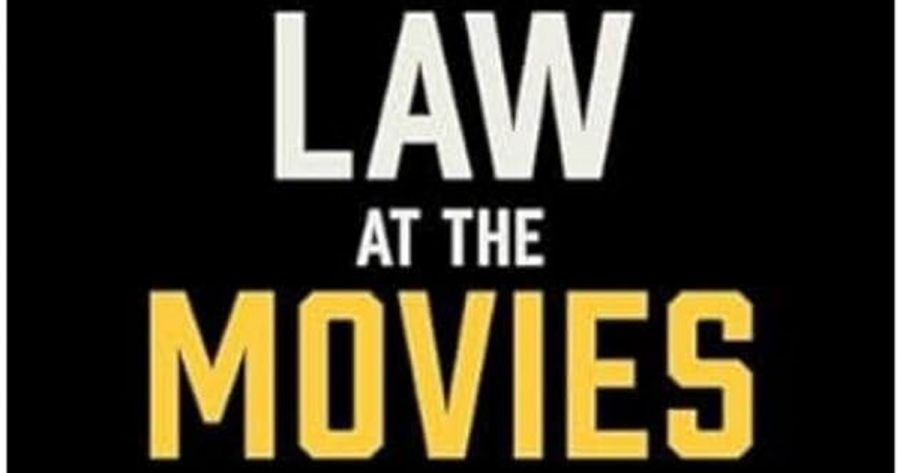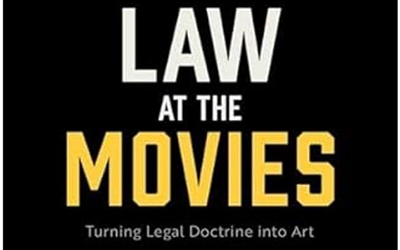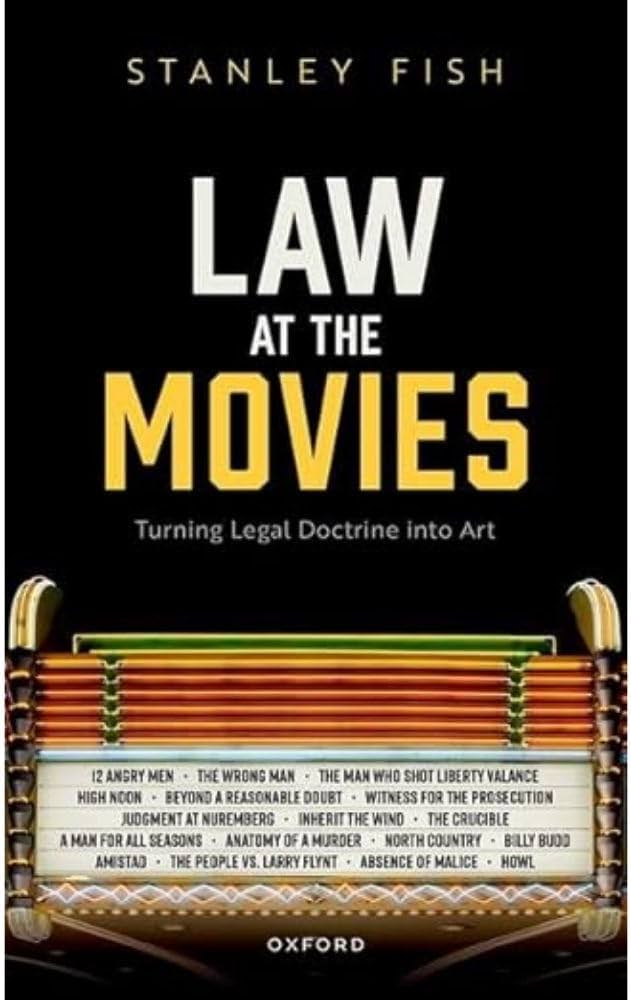
- Free Article: No
- Contents Category: Film Studies
- Review Article: Yes
- Article Title: ‘Law is the one’
- Article Subtitle: Anatomy of a film genre
- Online Only: Yes
- Custom Highlight Text:
Author and literary theorist Stanley Fish is, among other things, a professor of law specialising in constitutional law, media law, the First Amendment, and jurisprudence. It should come as no surprise, therefore, that over the course of his book Law at the Movies he shows a forensic knowledge of the judicial system in the United States. This is no casual checklist of films that feature lawyers as characters, but a dissection of how particular statutes and legal procedures are represented on screen. He conveys how, in the hands of gifted filmmakers, ‘dry as dust soil of legal doctrine flowers into something truly substantive and dramatically compelling’.
- Featured Image (400px * 250px):

- Alt Tag (Featured Image): Richard Leathem reviews ‘Law at the Movies: Turning legal doctrine into art’ by Stanley Fish
- Book 1 Title: Law at the Movies
- Book 1 Subtitle: Turning legal doctrine into art
- Book 1 Biblio: Oxford University, Press £25 hb, 211 pp
- Book 1 Cover Small (400 x 600):

- Book 1 Cover (800 x 1200):

He explores these questions with a selection of titles that do not exclusively fall into the expected courtroom drama sub-genre, but they all feature law as the primary generator of plot and character. He includes the western The Man Who Shot Liberty Valance (1962), where formal law is threatened by the law of the gun, and the film noir Beyond a Reasonable Doubt (1956), which deals with the death penalty.
Impressively, Fish has a sound appreciation of the art of film-making, detailing examples of editing techniques, camera placement, soundtrack and wardrobe choices, storytelling, and plot structure. He has an appetite for delving under the surface and questioning a film’s message. Is the accused youth at the centre of 12 Angry Men (1957) actually innocent? Is it possible for Henry Fonda’s Manny Balestrero in The Wrong Man (1956) to live a free life if he has a criminal for a double?
Fish alerts us to the intricacies of loaded dialogue and the meta qualities at play when the screenwriter and director involve the audience as a surrogate juror. He argues that 12 Angry Men is itself an exercise in manipulating an audience and playing on presumptions, using subtle choices of language and casting, in direct contrast to the message it preaches about releasing oneself from bias.
Perhaps the most obvious film that appears in Law at the Movies is Judgement at Nuremberg (1961), although given the formal documentary nature of the film, one could argue that there is not much artistic interpretation in simply dramatising the Nuremberg trials. Yet even here Fish observes such finer points as the decision to cast as witnesses actors with tragic pasts (Montgomery Clift and Judy Garland), thus eliciting immediate sympathy for their characters.
Judgement at Nuremberg deals directly with one of the book’s chief themes: the issue of morality in law versus adherence to legal procedures. Fish asks, ‘Are specific laws deficient or invalid if they have no connections to moral principles?’ He quotes Nazi-era defendant Friedrich Hofstetter, who declared before his sentence that he had been faithful to his profession ‘to sacrifice one’s own sense of justice to the authoritative legal order, to ask only what the law is and not to ask whether or not it is also just’. Hofstetter followed the law, but does that law uphold the values of our society?
The complex issue of morality versus the letter of the law is examined further in Billy Budd (1962) and A Man for All Seasons (1966) The former features an angelic character who commits a crime; the latter demonstrates that you can be a good citizen yet morally flawed. In both, law is procedural not substantive. The law is not based on virtue but on a system of checks and balances.
Most of the films that Fish explores were released in the 1950s and 1960s. He makes no mention of why this is. Was this the golden era of law-themed movies? Or is it simply a period that Fish is fond of, and these are the same examples he has been retreading for years in the Law at the Movies course he teaches? There is no analysis of many of the acclaimed films that succeeded this era, such as Kramer vs Kramer (1979), The Verdict (1982), and Philadelphia (1993)
Only two of the seventeen films that he delves into were made this century: North Country (2005) and Howl (2010). Both re-enact real-life court cases, the former being a class-action suit claiming sexual harassment and discrimination against women, and the latter the 1957 ‘obscenity trial’ centring on the poem ‘Howl’ by Allen Ginsberg.
Elsewhere, Fish has chosen films that focus on other particular areas of law: teaching evolution versus creationism in public schools in Inherit the Wind (1960); the insanity defence represented in Anatomy of a Murder (1959); property law and the abolition of slavery in Amistad (1997); and defamation law and freedom of speech in The People vs Larry Flynt (1996) and Absence of Malice (1981), based on the court cases Hustler Magazine vs Falwell and New York Times vs Sullivan respectively.
In most of Fish’s selections, the legal profession is seen in a positive light, with lawyers portrayed as heroes. Many however, demonstrate examples of law being corrupted, politicised, absent, or falling short. Actions can be legal but not moral. Evidence can be correct but misleading. As Sally Field’s journalist character says in Absence of Malice, when asked, ‘That’s true, isn’t it?’ – ‘No, but it’s accurate.’
Fish provides an engaging examination of legal procedures, their complexities and inadequacies, and how in many instances, but not always, they have been effectively captured on screen. If there is one common thread that Fish defines between cinema and law, it is with this piece of legal advice from abolitionist Theodore Joadson (Morgan Freeman) in Amistad (1997): ‘He who tells the best story wins.’


Comments powered by CComment